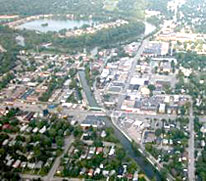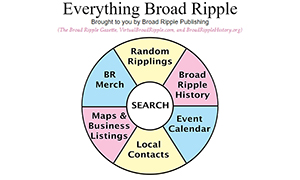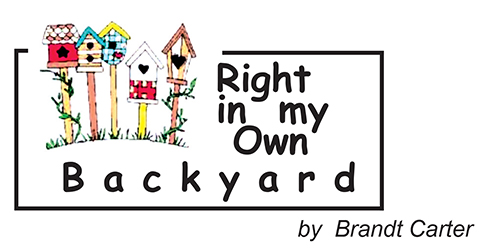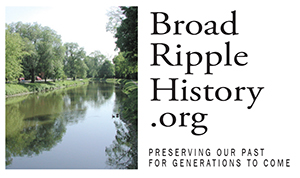
|
Broad Ripple Random Ripplings

The news from Broad Ripple
Brought to you by The Broad Ripple Gazette
(Delivering the news since 2004, every two weeks)

|
| Brought to you by: |

|

|

|

|

|

|
Converted from paper version of the Broad Ripple Gazette (v11n24)
Right in my Own Backyard - O Tannenbaum, O Tannebaum - by Brandt Carter
posted: Dec. 05, 2014

O Tannenbaum, O Tannebaum
With the holidays fast approaching, I'd like to sing the praises of the Christmas Tree. As you may recount, the tradition of the Christmas Tree to celebrate winter began centuries ago. Early people wanted to bring a bit a nature into their spaces to remind them of the outdoors with life-giving greens. The first decorated trees date back to the early 1500s, and the first reference in print was in Germany in the mid-1500s.
Today Christmas trees decorate homes, landscapes, and businesses. To celebrate the birth of Christ and the winter solstice, evergreen trees or the shapes of the trees begin appearing soon after Thanksgiving. There are White House trees indoors and out, the tree in Rockefeller Center, and the tallest tree is right here in Indiana decorating Monument Circle.
Each year growing up, my mother would send my father out to get a Christmas tree. Although our tree never tried to rival public trees, it did have great meaning in our Christmas celebration. Dad would pile us in his dark green pickup truck and head down to Farmer's Market on Southeast Street. The open-air market was lined with vendors selling all kinds of trees. We would traipse after Dad as he carefully held up each tree he was considering, then asking the price. If it was too high, he would go on to the next likely candidate. The main consideration was short vs. long needles. A short or missing branch that left a part of the tree of choice lopsided somewhere always seemed to allude Dad.
To help you choose your tree this year, I went to the Indiana Christmas Tree Growers Association. They lobby for real trees because they are renewable, recyclable, and all natural. When you go to a Christmas tree lot or farm, you will be partaking in a tradition of commercial tree sellers started back in the 1850s. The most popular trees you can choose from are the Scotch pine, Douglas fir, Frasier fir, and White pine.
While researching websites about Christmas trees (like the Indiana Christmas Tree Growers Association where you can find Indiana tree farms), I came across two interesting sites: Real Trees 4 Kids where teachers can find K-12 curriculum for teaching units and the National Christmas Tree Association for all information about Christmas trees.
I also found the Trees for Troops, a program that provides farm-grown Christmas trees to armed forces members and their families in the U.S. and overseas. Contributions and volunteers, including growers and FedEx, have provided more than 139,000 trees since 2005. The tree project is going on again this year. To my surprise this national program began at the Dull's Tree Farm in Thorntown, Indiana. Located in northwestern Boone County, about halfway between Lafayette and Indianapolis, Dull's Tree Farm kicked off Trees for Troops on November 18 by shipping 200-300 trees. You can find out more information on the Trees for Troops website.
If you have to make a choice this year between fresh or artificial, try a fresh tree. Here are some interesting closing facts about O Tannenbaum:
- Live Christmas trees have been sold commercially in the United States since about 1850. Be part of the tradition.
- In the United States, there are more than 15,000 Christmas tree farms. There are approximately 350 million Christmas trees growing on U.S. farms. Approximately 100,000 people are employed full or part-time in the Christmas tree industry. Eighty percent of artificial trees worldwide are manufactured in China. Fresh trees equal "Grown and Made in the USA" jobs.
- Artificial trees will last for six years in your home, but for centuries in a landfill. If you support recycling, fresh trees can be recycled and they make good mulch, landscape barriers, decorated trees for the birds.
May a Fresh Tree deck your home this year!
Brandt Carter, artist, herbalist, and naturalist, owns Backyard Birds at 2374 E. 54th Street. Visit her web site www.feedbackyardbirds.com. Email your bird questions to Brandt@BroadRippleGazette.com
brandt@broadripplegazette.com

|

|

|
| Brought to you by: |

|

|

|
| Brought to you by: |

|

|

|
| Brought to you by: |

|

|

|
| Brought to you by: |



